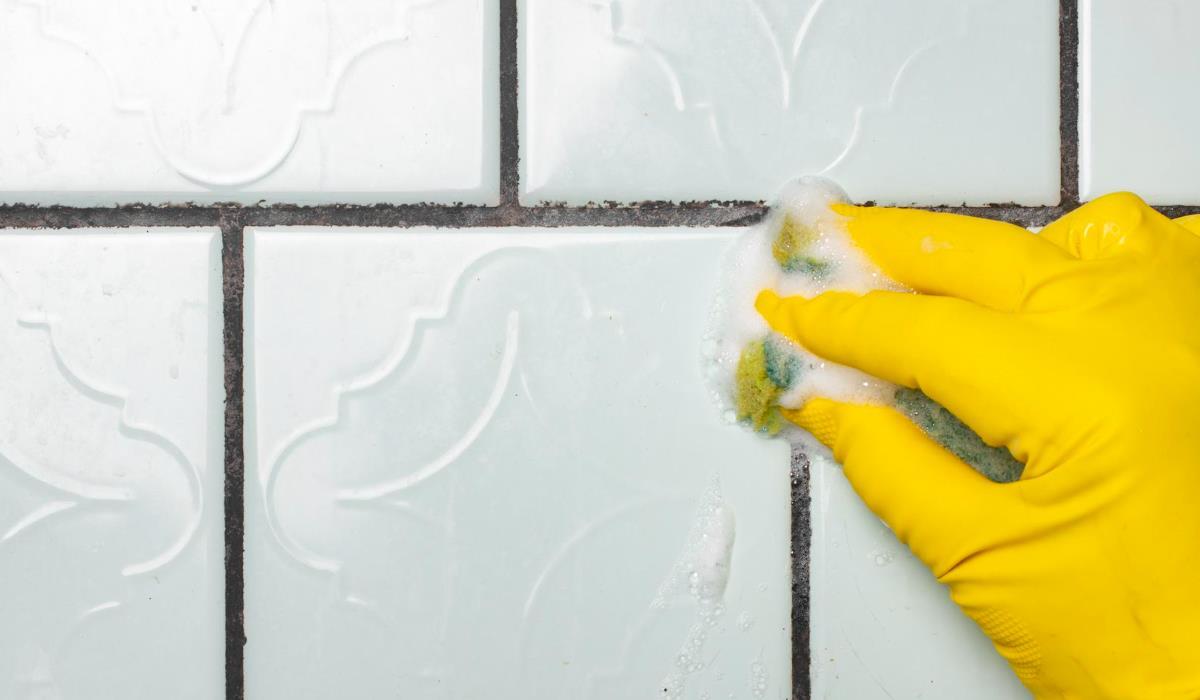Although there are many methods of removing mold, some areas, especially those that are hard to reach or made of porous materials such as certain fabrics or raw wood, are more difficult to clean. The joints between tiles, especially in rooms with high humidity levels such as bathrooms and kitchens, are typical places where mold likes to settle.
However, there are ways to prevent its formation and effective methods to remove it, if it has already settled on the joints and spoils the appearance of carefully selected tiles. Below are some proven methods, some of them based on everyday home remedies, others on stronger chemicals.
Can mold be removed from grout?
In many cases, mold can be effectively removed from the grout, but this largely depends on the severity of the problem. If you’ve tried the suggestions below and still haven’t been able to restore your grout to its former glory, grout replacement may be your only option.
While this is undoubtedly more time-consuming than stain removal, it guarantees a return to clean grout. You will need to remove the soiled grout with a grout remover or a multi-tool with a grout blade and then fill the clean gaps with fresh grout.
However, before you get down to business, try a few of the methods below

Try one of the many methods using bleach
The first method of cleaning grout, which we have heard a lot of positive feedback about, requires minimal effort, but you will need to stock up on cotton buds. All you need are cotton balls – the bigger the better – and a bottle of household bleach. Be sure to protect your clothes, skin, and soft furnishings near you before you start. This works best on tile joints or other horizontal surfaces where cotton buds won’t slide off walls. Soak cotton balls in bleach, then cover the joints with them and leave for about 12 hours. The mold should be gone by this time. Rinse off the bleach and throw away the cotton balls. Alternatively, make a bleach spray by combining water and bleach in a reusable spray bottle, apply to affected areas, leave on for about 30 minutes, then rinse.
Try a whitening toothpaste
Toothpaste not only improves your smile. The idea is that the slightly abrasive properties of the paste with baking soda or bleaching agents will help eliminate unsightly mold stains.
Vinegar is not only good in the kitchen
Where would we be without this reliable kitchen ingredient? Cleansing vinegar is a great all-round natural cleaner that works on all kinds of stains and can be used to remove mold from walls, wood, and silicone caulk.
Create a home solution with baking soda
Combine a cup of vinegar with two to three teaspoons of baking soda, adding more as needed until you get a thick paste. Massage it into the joints with a cloth and leave it for about 15 minutes, then wash it off.
Refresh with lemon juice
Lemon juice will not only help remove mold stains on the grout, but also refresh the smell of the room. Cleaning experts recommend spraying the affected areas with lemon juice, letting it sit for about 15 minutes, then washing it off with warm water and a scrubber or brush. Alternatively, apply lemon juice by cutting a lemon in half and rubbing it directly over the mold on the grout.
Try a specialized mold cleaning spray

If you’ve tried the above methods and they didn’t work, it’s time to try one of the best grout cleaners out there. While there are many grout cleaners on the market, many are designed to remove dirt, stains, and discoloration, not mold. Therefore, it’s better to choose a mold remover spray, unless the grout cleaner you’re considering specifically states that it’s effective against mold.
Try a grout pen
Grout pens are a good way to instantly refresh grout with mold – but you have to remember that they mask stains, not remove them. Also, their effects wear off over time, so be prepared to repeat the process.
Consider deep cleansing with a steamer
If you own a steamer, you’re in luck – this can be a great way to remove mold from grout, especially those that have special grout cleaning tips.
Refresh by sanding and sealing
If the mold stains in the grout are really deeply ingrained, you may have to physically remove the top layer of the grout instead of relying on a stain removal method.
How to prevent mold on grout
Once you’ve removed mold from your bathroom or kitchen grout, you’re sure to want to prevent it from coming back. Internal leaks caused by a bad or damaged one can cause moisture – and that usually means mold. Also invest in a good quality exhaust fan. Additionally, open windows daily to bring fresh air into the room. Remember to wipe daily. Natural vinegar and lemon sprays will help prevent mold, as will many easily available bathroom cleaners. Wipe down walls and floors daily: A quick wipe down of walls and floors with an old towel will really help prevent the problem from returning.
Summary

Remember that regular cleaning and maintaining proper hygiene is the key to preventing mold growth. Grout cleaning is not only a matter of aesthetics, but also health. Remember that mold can lead to many health problems, such as allergies and respiratory problems. That’s why it’s worth investing some time and effort to keep your grout clean and mold-free.



